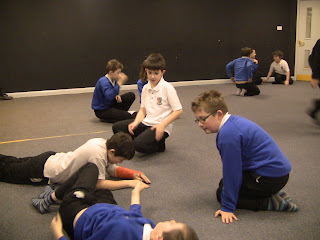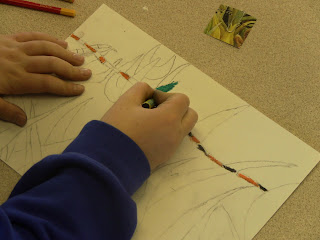Cultural Storytelling 18 Feb 2011
Cross cutting as a Drama Strategy
WALT Apply drama strategies to our performance.
Level 3c Show understanding of the term “cross-cutting”
Level 3 b Use “cross-cutting” in a performance.
Level 3a Use “cross-cutting” at an appropriate point in the story.
Extension Use more than one strategy to tell a story convincingly.
At first Miss Heather and another pupil both told the class a story BUT they both spoke at the same time which makes it difficult to follow either story as it is hard to focus on only one speaker.
Then there was a demonstration of cross – cutting where part of each story was told alternatively. It was much easier to focus on one story at a time even though two stories were being told.
Demonstration of cross-cutting.
Class separated into groups.
Using cross-cutting
Each group has a section of the Zulu story. The whole story will be told section by section with each group telling their part of the story.
10 mins, to practice their part of the story.
Miss Heather read the story and each group had to perform their part of the story as she moved from group to group.
Next part of the lesson, groups had to think of a story they already know
Then each group will join with another group and act out their story “cross-cutting” to the other group until they have told all their story, (so 2 stories being told at the same time.














































